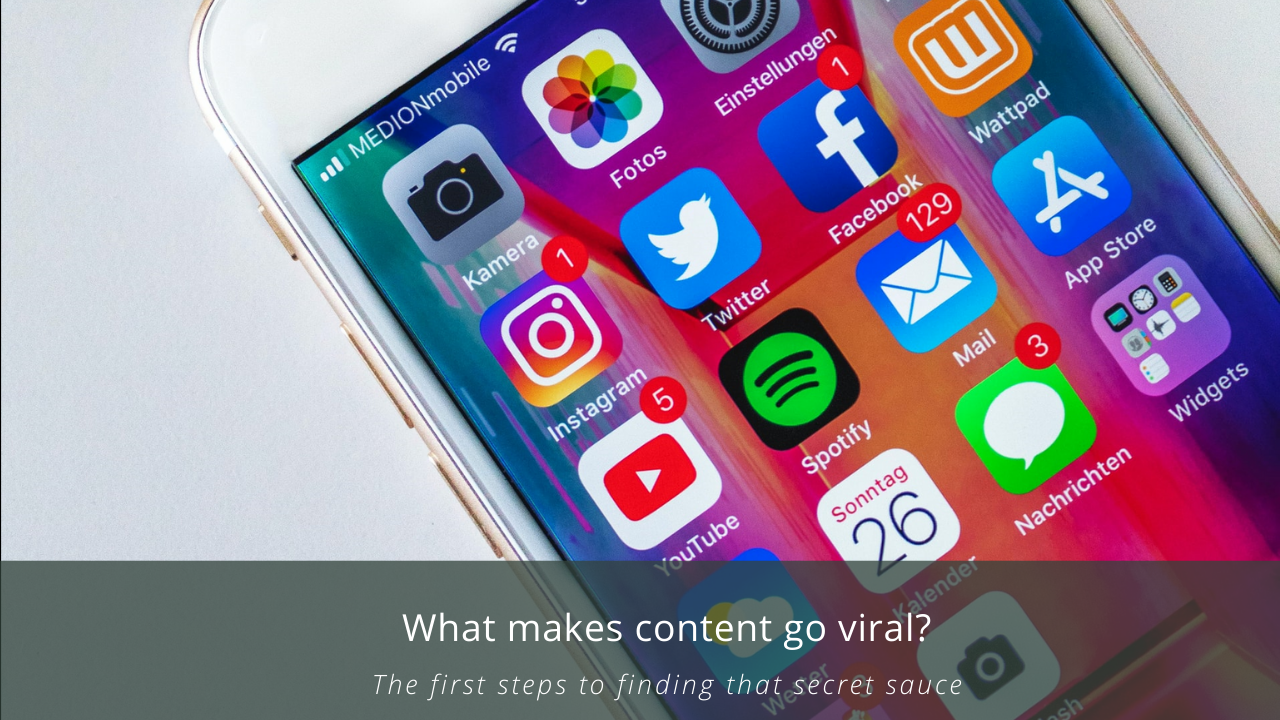Going viral is a term reserved for content that is shared rapidly online over a short period. Typically, a video must get over 5 million hits in less than a week to be considered to have gone viral.
It is all the rage with content creators and marketers because of the enormous impact it can have on a brand or product if they manage to reach the dizzying heights of virality. Popular content has the possibility of reaching millions of potential customers. It can shape how the audience feels about the product, giving companies notoriety that is hard to cultivate using traditional marketing.
Why content marketing matters beyond web traffic
Of course, everyone is now trying to guess the secret sauce of going viral. In reality, there may not be a precise formula, but there is a range of strategies, approaches, and best practices that will give you a fighting chance.
Speed and size

Having an existing audience with whom you can share content is essential when trying to promote viral content. We have recently seen massive growth in the monetization of Facebook groups and Instagram influencers. This is because they provide a direct route to tailor-made audiences, that would otherwise take months or years to generate. These audiences are typically more motivated than the average user. This is because they are following a hobby, interest or someone they align with, and hence are more likely to share information quickly.
So the crucial elements at play here are size and speed. Size of the potential audience – which can be made or bought, and their speed – or willingness to share content quickly. Keep these in mind when choosing the avenues to pursue to market your content and be aware that paying for promotion may not generate the organic, user-led viral campaign.
Social currency
Creating content that allows people to earn some social currency while sharing it is a great tool to encourage virality. The truth is that people love to look good in front of their peers, so create content that appeals to people’s narcissistic side – make them look smart, kind or caring for sharing.
One of the greatest successes of this approach was the ALS Ice Bucket Challenge. The challenge was for a fantastic cause and made participants look noble in the process. Additionally, it had the element of embarrassment, which aided with social connections and shareability. Always make sure to consider how the people sharing your content will be perceived once they have done it.
Relevance
Content focusing on trending topics is much easier to share and far more likely to go viral. People want to read and view things that the world is already discussing. However, with the increased volume of online content, those discussions change much faster than they used to. Therefore, it is essential to act quickly because keeping up with trends is a tough task. Think of how fads like fidget spinners changed the world, only to go stale almost overnight. Make sure to get in early, otherwise you risk becoming old news before even publishing.

Make it personal
People love to share content that has a human element or story embedded through it. This makes it easier to relate to and increases the likelihood of it becoming popular. Typically, people share things that generate emotions such as humour, awe, wonder, surprise, and curiosity. If you can link these in with a personal approach you could be on to a winner.
Marketing is poised for a tech disruption right now
The best example of this was from Coca-Cola with their Share A Coke campaign. People were actively looking for their friend’s names hoping to surprise them, and it was a huge success. People loved to share it online – hoping to share a laugh with a friend. Aside from this, creating headlines that utilize a curiosity gap is a fantastic way to entice people into reading or viewing your material.
Make it easy on the eyes
Infographics and quality visuals are now among the most shared things online. They are easy to digest and contain as little text as possible, which makes it very appealing for a typical consumer who may be viewing on the move.
Conversely, long paragraphs are unappealing to the eye and with the shrinking attention spans that we all suffer from. This in part explains the massive increase in the number of videos that are going viral as well as list-format articles that have become so popular in recent times.
So keep in mind that the content you need to promote shouldn’t be bulky and must be easy on the eyes.
Make it interactive
Keeping consumers engaged is a fantastic tool for ensuring the longevity of a marketing campaign. It also helps with the development of the appeal of the brand in the long term.
Many successful viral campaigns are now utilizing user-generated content to create and maintain the momentum of a campaign. Adidas, for example, promoted a massive giveaway at the Boston Marathon and enticed participants to submit videos of themselves before or during the event for a chance to win. This allows for a company to produce minimal content but still have a fantastic reach to its customers.
Keep it real
Most people are looking for genuine content. Creating overproduced and overdone content is a sign to consumers that it may be a corporate entity forcing the strings of virality.
Creating something for the sole purpose of going viral can lead to a backlash from potential consumers. The best example is Kendall Jenner teaming up with Pepsi, which quickly became a global laughing stock.
Keeping the content and approach genuinely builds long term trust in a brand. It also ties in with participants earning some social currency. Dove’s Beauty Sketches which are part of its natural body-positive campaign is widely regarded as of the best viral campaigns ever. This is because it is incredibly relatable to the everyday consumer and feels genuine throughout.
******
While these techniques and strategies won’t immediately guarantee viral success, they are incorporated in the blueprints of companies whose content has achieved wide-scale success and can help you navigate your way to brand notoriety.
If you’re interested in how your content can go viral, contact us at hello(@)syncpr.co to find out more.
Last updated 10 June 2020.


A viral post is one that spreads quickly on social media and reaches much beyond your current number of followers. The bulk of postings have a short life expectancy – they don’t obtain a large number of likes immediately, thus they don’t touch a large number of people. However, postings that instantly capture the attention of followers and generate a huge number of likes and shares in a short period of time are very likely to go viral!